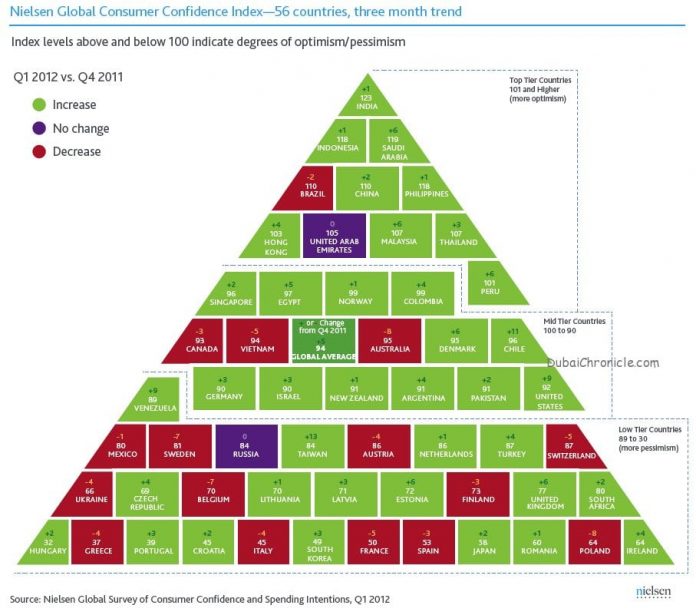
UAE consumer confidence started 2015 with an index score of 115—an increase of one point from fourth-quarter 2014 and from a year-ago, according to the Nielsen Global Survey of Consumer Confidence and Spending Intentions. The consumer confidence index measures perceptions of local job prospects, personal finances and immediate spending intentions, among more than 30,000 respondents with Internet access in 60 countries.
At 115, the United Arab Emirates had the highest index in the region. Confidence also increased five points in Saudi Arabia to 107 and one point in Pakistan to 102. Conversely, confidence decreased one point in South Africa to 87 and remained steady in Egypt at 90. The Government’s ability to continue with its development agenda, despite falling oil prices, has given a boost to consumer morale in the UAE.
In the UAE, sentiment about job prospects and immediate spending intentions declined five percentage points to 66% and one percentage point to 50%, respectively, while personal finances sentiment increased three percentage points to 67% from fourth-quarter 2014. The number of UAE consumers who believed they were in recession increased to 39% from 36% the previous quarter and from 33% from a year ago.
UAE discretionary spending intentions increased in the first quarter not across all lifestyle categories measured. Almost three-in-10 UAE respondents (28%) planned to spend on holidays/vacations and a quarter planned to spend on new clothes (25%) and for paying credit cards and debts (24%), quarterly increases of four, two and three percentage points, respectively. Spending intentions for out of home entertainment (16%) and home improvements / decorations (14%) declined five percentage points and four percentage points, respectively, from the previous quarter.
UAE saving intentions, on the other hand, showed a slight increase of one percentage point each for investing in stocks and mutual funds (13%) and one percentage point for retirement savings (12%) from fourth-quarter 2014. More than half of UAE respondents planned to bank their spare cash (53%), an increase of 3 percentage points from the previous quarter, while 11% said they had no spare cash, down from 14% the previous quarter.



































